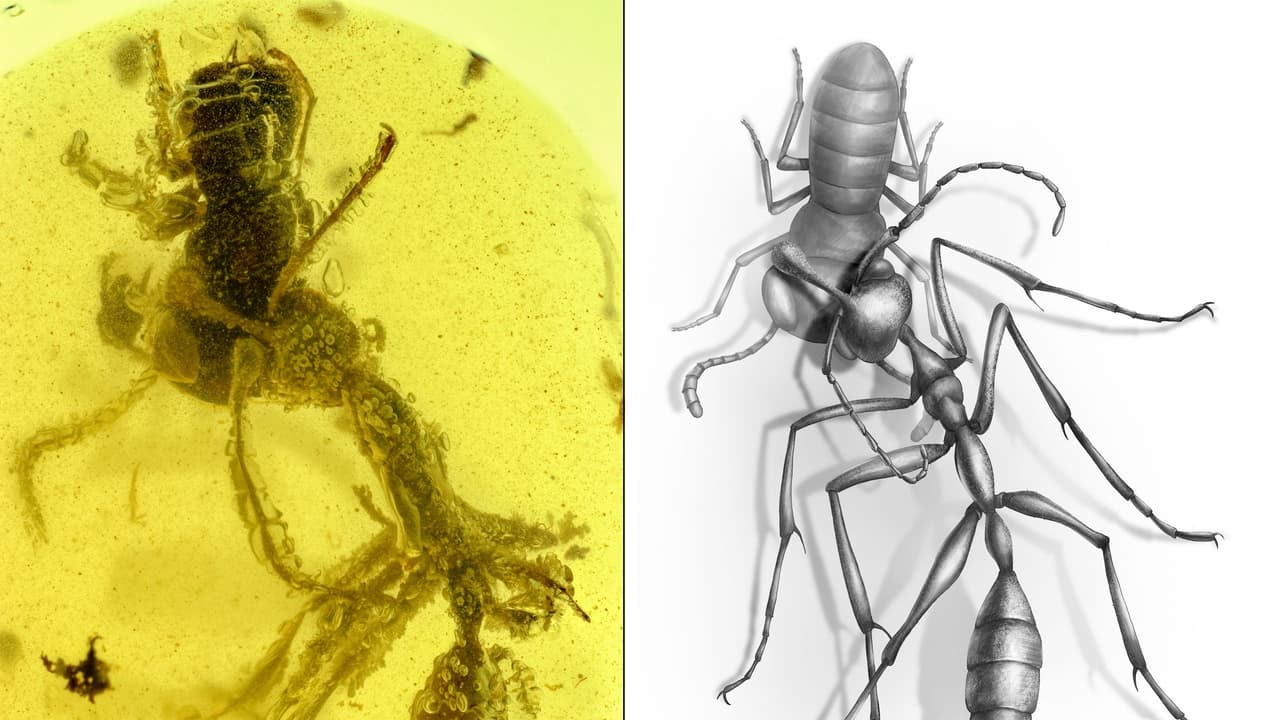A 16-million-year-old amber fossil from the Dominican Republic reveals Basiceros enana, the smallest known predator ant. The find shows it lived in the Caribbean before going extinct, offering new clues about ant evolution, ancient island ecosystems.
Tiny Predator Ant Found
A 16-million-year-old amber fossil reveals the smallest predator ant ever found, offering new clues about ant evolution and ancient Caribbean life.
A piece of 16-million-year-old amber from the Dominican Republic has revealed something extraordinary—a new species of “dirt ant” that turns out to be the smallest predator ant ever found.
The fossil, named Basiceros enana, measures just over 5 millimeters long—almost half the size of its modern relatives. Yet despite its tiny size, it already had the same dirt-camouflage tricks that today’s dirt ants use to hide from predators and sneak up on prey.
What’s a Dirt Ant?
Dirt ants (Basiceros) are masters of disguise. They have special hairs on their bodies that hold soil and leaf bits, making them nearly invisible against the forest floor. Modern species are found from Costa Rica to southern Brazil, but until now, no fossils had been found in the Caribbean.
A Rare Discovery
Finding a dirt ant alive today is rare—they’re small, secretive, and well-hidden. Finding one perfectly preserved in amber is like striking gold. This fossil, discovered in Dominican amber, proves that these ants once lived in the Caribbean before disappearing from the islands millions of years ago.
The research, published in the journal Proceedings of the Royal Society B, was led by scientists from the New Jersey Institute of Technology (NJIT). Lead author Gianpiero Fiorentino from NJIT’s Barden Lab says the find changes what scientists thought about the ants’ size evolution. Earlier theories suggested they started out large and got smaller over time. But this fossil shows the opposite—the earliest known Caribbean species was small, and dirt ants grew larger over the last 20 million years.
High-Tech Science for a Tiny Insect
Researchers used advanced 3D imaging (Micro-CT scanning) to examine the ant without damaging it. The scans revealed fine details like:
- Two types of dirt-grabbing hairs (“brush hairs” and “holding hairs”)
- A unique upturned spine on its back
- A trapezoid-shaped head
- Sharp, triangular teeth for hunting prey
Why Did It Vanish?
Despite its clever camouflage, Basiceros enana eventually went extinct in the Caribbean. Scientists think changes in the environment during the Miocene epoch, loss of hunting territory, or competition from other ants may have driven it out. In fact, over a third of predator ant species have disappeared from the Dominican Republic since that time.
Why It Matters Today
By studying ancient extinctions, scientists hope to better understand how to prevent modern ones—especially as human activities continue to threaten biodiversity. As senior author Phil Barden puts it, this fossil is “a piece of a larger puzzle” showing that the past is often more complex than it appears.
